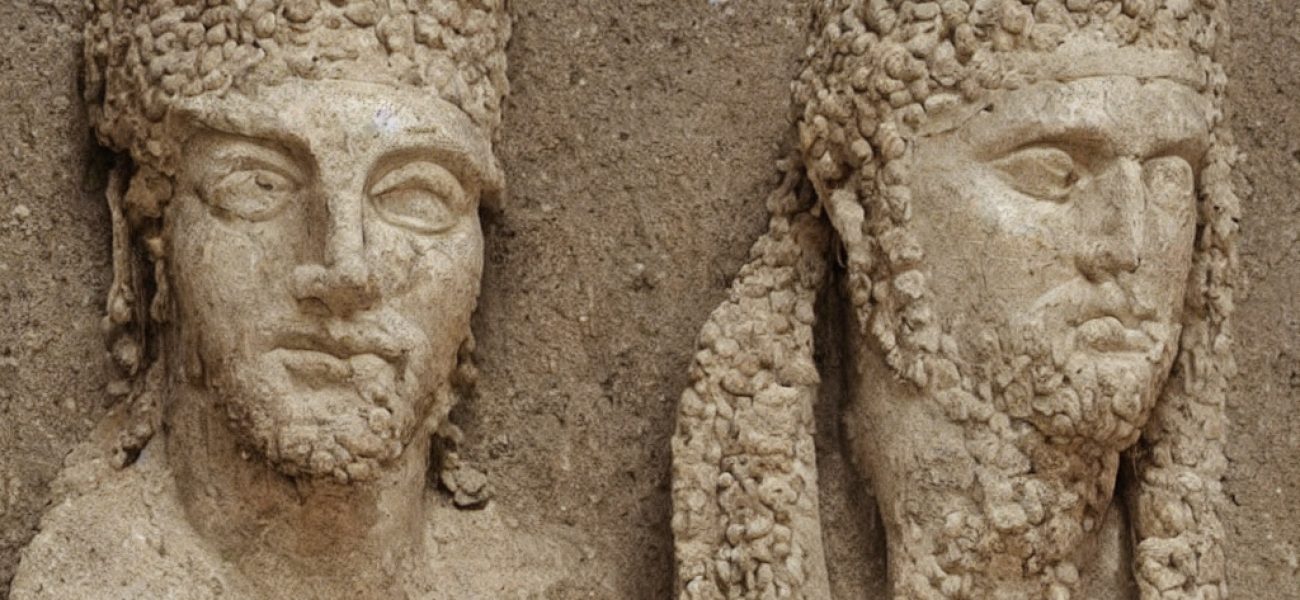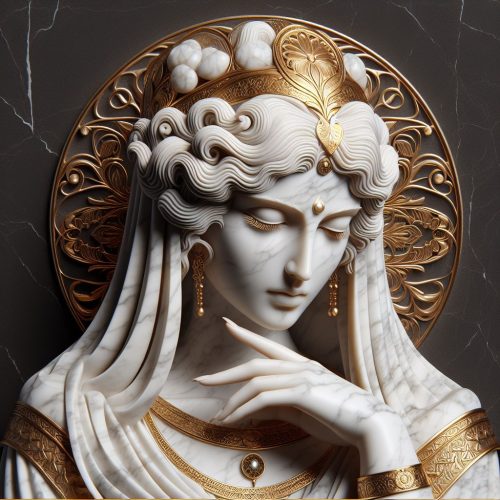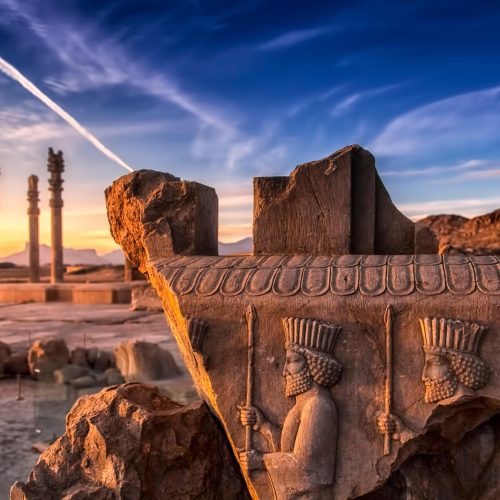Artaxerxes I, also known as Artaxerxes Longimanus (465–424 BCE), occupies a pivotal position in the annals of the Achaemenid Empire. As the son of Xerxes I, the great ruler who fought at Thermopylae and Salamis, and the grandson of Darius I, the architect of the Persian Empire’s expansion, Artaxerxes inherited a realm that spanned vast territories. His reign, however, was marked by significant challenges—both internal and external—including dynastic rivalries, rebellions, and diplomatic entanglements with Greece.
This article seeks to offer an in-depth exploration of Artaxerxes I, focusing on his ascent to power, his handling of the Egyptian revolt, his diplomacy with Greece, his depiction in biblical texts, interpretations of his actions, his medical history, and the fates of his children. By weaving together historical narratives with modern interpretations, this piece aims to illuminate both the complexities of his reign and the enduring impact of his legacy.
Succession to the Throne: The Aftermath of Xerxes’ Assassination
The accession of Artaxerxes I to the Achaemenid throne was far from a peaceful transition. The assassination of his father, Xerxes I, in 465 BCE, cast a long shadow over the early days of his reign. Xerxes, a figure known for his campaigns against Greece, was murdered in a palace conspiracy led by the commander of the royal guard, Artabanus, with the assistance of eunuch courtiers.
Artaxerxes, initially a prince of secondary importance in the royal lineage, was thrust into power under circumstances both precarious and violent. According to some historical accounts, Artabanus initially sought to place Artaxerxes on the throne as a puppet ruler, after having orchestrated the death of the heir apparent, Darius, another son of Xerxes. However, the situation quickly escalated, and the young prince found himself in a deadly contest for control of the empire. Artaxerxes, with the help of loyal generals and courtiers, managed to secure his position by eliminating Artabanus and quashing other elements of the conspiracy.
The transition was emblematic of the court intrigue that often characterized the succession struggles of Persian monarchs. Despite the violent beginning to his reign, Artaxerxes I exhibited a remarkable resilience, navigating the treacherous waters of Achaemenid court politics to emerge as a formidable ruler in his own right.
The Egyptian Revolt: The Struggle for Control Over the Satrapies
One of the major challenges that faced Artaxerxes I during his reign was the Egyptian revolt, which threatened the stability of the western fringes of the empire. Egypt, which had been incorporated into the Persian Empire during the reign of Cambyses II, remained a particularly restive province, prone to rebellion and resistant to foreign rule.
In 460 BCE, under the leadership of a Libyan prince named Inaros, a full-scale rebellion broke out in Egypt. Inaros was supported by the Athenians, who had their own grievances with Persia and sought to undermine the empire’s authority in the region. This rebellion quickly gained momentum, with Egyptian forces managing to defeat Persian troops in several key engagements.
Artaxerxes, faced with this substantial revolt, responded by dispatching a large army under the command of his brother, Achaemenes. However, Achaemenes was killed in battle, and the rebellion continued to pose a serious threat. For several years, Persian authority in Egypt hung in the balance. The involvement of Athens complicated matters further, as the Greeks provided military and financial support to the rebels.
Ultimately, Artaxerxes I’s persistence paid off. The Persian general Megabyzus, a seasoned commander, was able to defeat Inaros and quell the rebellion in 454 BCE, restoring Persian authority over Egypt. The defeat of Inaros and the recapture of Egypt was a significant victory for Artaxerxes, demonstrating his ability to maintain control over a critical satrapy. However, it was also a costly affair, and the prolonged conflict with Egypt and Greece weakened the empire’s military and financial resources.
Relations with Greece: Diplomacy and Conflict
Artaxerxes I’s reign was marked by complex and often hostile relations with the Greek world. His predecessors, Darius I and Xerxes I, had engaged in direct military confrontations with the Greek city-states, most notably during the Greco-Persian Wars. Artaxerxes, however, pursued a more nuanced policy that combined both diplomacy and military action, reflecting the shifting dynamics of Greek politics in the mid-fifth century BCE.
Following the Persian defeat at the Battle of Salamis in 480 BCE, the Achaemenid Empire had been forced to reconsider its approach to Greece. By the time of Artaxerxes’ reign, Greece was divided into rival city-states, with Athens and Sparta as the two dominant powers. The Athenians, who had fought against Persia in the earlier wars, remained a thorn in Artaxerxes’ side, particularly through their involvement in the Egyptian revolt.
Artaxerxes initially adopted a defensive posture, focusing on maintaining the empire’s territorial integrity rather than pursuing further conquests in Greece. However, his reign witnessed the continuation of hostilities between Persia and the Greek world, particularly as the Delian League, led by Athens, sought to expand its influence in the Aegean and eastern Mediterranean.
One of the most significant episodes in Persian-Greek relations during Artaxerxes’ reign was the Peace of Callias, supposedly negotiated in the 440s BCE. According to some historical accounts, this treaty marked the formal end of the hostilities between Persia and Athens, with both sides agreeing to respect each other’s spheres of influence. While the existence of the treaty is debated among modern scholars, it represents a turning point in Artaxerxes’ foreign policy, as it signaled a shift from direct confrontation to diplomacy and accommodation.
Nevertheless, Artaxerxes I’s relations with Greece remained fraught with tension. The rise of Sparta and the continued Athenian presence in the eastern Mediterranean posed ongoing challenges for the empire. Although he succeeded in stabilizing the situation for a time, Artaxerxes’ successors would face renewed conflicts with Greece in the following decades.
Portrayal in the Book of Ezra and Nehemiah: The King as Benefactor
Artaxerxes I is an important figure in the biblical books of Ezra and Nehemiah, where he is depicted as a benefactor of the Jewish community in Jerusalem. These texts provide a unique perspective on the Persian monarch, highlighting his role in the restoration of the Jewish temple and the rebuilding of the city’s walls.
In the Book of Ezra, Artaxerxes is shown as a king who grants the Jewish scribe Ezra permission to return to Jerusalem and oversee the religious and legal affairs of the Jewish people. Ezra is entrusted with the task of promoting the observance of Jewish law and ensuring the proper functioning of the temple. The king’s decree reflects the broader Achaemenid policy of religious tolerance, which allowed subject peoples to practice their faiths and maintain their cultural identities, so long as they remained loyal to the empire.
The Book of Nehemiah further expands on Artaxerxes’ involvement in Jerusalem’s restoration. Nehemiah, a Jewish official in the Persian court, is granted permission by Artaxerxes to return to Jerusalem and supervise the rebuilding of the city’s walls, which had been left in ruins. Nehemiah is not only provided with royal support but also receives letters of safe passage and materials for the construction work.
Artaxerxes’ portrayal in these biblical texts is largely positive, emphasizing his role as a just and benevolent ruler who supports the Jewish community. This image stands in contrast to the more antagonistic depictions of earlier Persian kings, such as Xerxes, in other Jewish writings. The Persian monarch’s favorable treatment of the Jews reflects his broader policy of maintaining stability in the empire through religious and cultural accommodation.
Interpretations of Actions: A Diplomatic and Strategic Monarch
Artaxerxes I’s reign has often been interpreted through different lenses by historians and scholars. Some view him as a pragmatic and cautious ruler, whose actions were primarily driven by a desire to preserve the empire’s territorial integrity and prevent further rebellions. Others see him as a king who understood the limits of Persian power and sought to manage the empire’s vast and diverse population through diplomacy rather than military force.
His handling of the Egyptian revolt and his relations with Greece, for example, demonstrate a ruler who was willing to employ both force and diplomacy to achieve his goals. While he did not shy away from military intervention when necessary, Artaxerxes also recognized the importance of negotiating peace and avoiding costly conflicts. The Peace of Callias, if it indeed took place, is a testament to his diplomatic acumen and his ability to manage the empire’s relations with powerful external foes.
Furthermore, his portrayal in biblical sources as a benefactor of the Jewish people highlights his use of religious and cultural policies to secure the loyalty of subject peoples. By allowing the Jews to rebuild their temple and re-establish their religious institutions, Artaxerxes ensured their continued loyalty to the Persian Empire. This strategy of accommodation and tolerance was a hallmark of Persian imperial policy, and Artaxerxes I exemplified its successful implementation.
Artaxerxes’ reign has also been the subject of debate regarding his personality and character. Some sources describe him as a king who ruled with moderation and fairness, while others suggest that he could be ruthless when necessary, as evidenced by his suppression of revolts and conspiracies within the court. This duality reflects the complexities of ruling such a vast and diverse empire, where both benevolence and force were necessary tools of governance.
Medical Analysis: Longimanus and Its Possible Origins
Artaxerxes I is famously referred to as “Longimanus,” a name that means “long hand.” Ancient sources suggest that this moniker was given to him because one of his hands was longer than the other. While this detail has often been dismissed as a mere anecdote, modern medical historians have speculated on the possible condition that could have caused such a physical feature.
One possible explanation is that Artaxerxes may have suffered from gigantism or acromegaly, conditions caused by an overproduction of growth hormones. These disorders can lead to abnormal growth of the bones and tissues, resulting in disproportionate limbs. If Artaxerxes indeed had one arm longer than the other, it could be attributed to such a condition.
Another theory is that the term “Longimanus” may not have been intended to be taken literally, but rather as a symbolic reference to his reach or influence as a king. In this interpretation, “long hand” could signify his ability to extend his power across great distances, reflecting the vast extent of the Achaemenid Empire.
Regardless of the true origin of the nickname, it remains one of the most distinctive features associated with Artaxerxes I, adding an element of mystery and intrigue to his legacy.
Children and Legacy: Dynastic Struggles and Succession
Artaxerxes I’s legacy was shaped not only by his achievements during his reign but also by the fate of his children and the succession struggles that followed his death. Like many Persian kings, Artaxerxes had numerous children, and the competition for the throne among his sons would have lasting consequences for the empire.
Artaxerxes’ most prominent sons included Xerxes II, Sogdianus, and Ochus (who would later take the throne as Darius II). The succession following Artaxerxes’ death in 424 BCE was tumultuous. Xerxes II, the legitimate heir, ruled for only a few months before being assassinated by his half-brother, Sogdianus. Sogdianus’ reign was short-lived as well, lasting only a few months before he was overthrown and killed by another brother, Ochus.
Ochus, who adopted the name Darius II upon ascending the throne, ultimately secured the Achaemenid throne, but the violent struggles among Artaxerxes’ children reflected the instability that often accompanied royal succession in the Persian Empire. This pattern of fratricidal conflict would continue to plague the Achaemenid dynasty in later generations, contributing to the eventual decline of the empire.
Artaxerxes I’s children, therefore, played a crucial role in shaping the future of the empire, both through their own actions and the dynastic strife they engendered. The internal struggles of the royal family weakened the cohesion of the empire and set the stage for the challenges that would confront Artaxerxes’ successors.
Artaxerxes I’s reign, though often overshadowed by the more dramatic exploits of his predecessors and successors, was a critical period in the history of the Achaemenid Empire. His ascent to power, marked by conspiracy and violence, set the tone for a reign that would be defined by both internal and external challenges. The Egyptian revolt, relations with Greece, and the depiction of Artaxerxes in biblical texts offer glimpses into the complex political and cultural landscape of the time.
Artaxerxes I’s legacy, both as a ruler and as a father, is one of pragmatism, resilience, and adaptability. His ability to maintain the empire in the face of rebellion and foreign threats, while also promoting policies of religious tolerance and diplomacy, ensured the continued survival of the Achaemenid state. However, the dynastic struggles that followed his death foreshadowed the eventual decline of the empire.
In the final analysis, Artaxerxes I stands as a figure of considerable historical importance, whose reign offers valuable insights into the nature of Persian kingship, diplomacy, and governance. His story, like that of the empire he ruled, is one of both grandeur and fragility, a testament to the complexities of imperial power in the ancient world.




